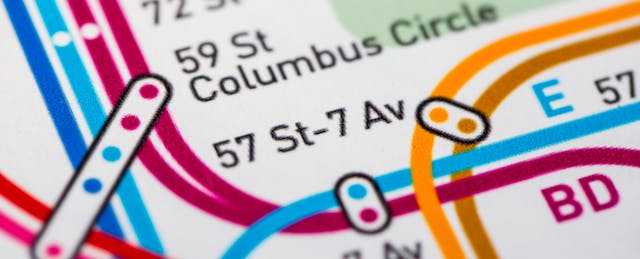What does navigating the New York City subway have to do with teaching computer science?
More than most teachers might at first suspect. Like coding, analog maps of the subway can be used to teach computational thinking, making the subway system a perfect conduit to teaching computer science ideas without the use of, well, computers.
Even better, this kind of “unplugged” approach to teaching computational thinking may be the path that will help us address a looming educational chasm: how to ensure equitable access to computer education across the globe.
Here’s the problem: In spite of the relative success of programs like Code.org and CS4ALL, the latest data from the College Board show that only 28 percent of the AP Computer Science test-takers in 2018 were women. And the combined number of Black, Hispanic and Native American students who took the AP test is less than half the number of white students.
Making computer science a part of all teachers’ repertoires can change the picture. Ensuring that every teacher has the knowledge and resources to provide a quality computing education is key. Yet even though almost all K-12 classrooms have computers or tablets, most teachers aren’t trained to leverage computing education for rigorous learning. Teacher training programs aren’t yet making a dent: Very few, if any, training programs in the U.S. currently offer computing education as part of their teacher training, per one report.
Even if the CS teacher shortage were no longer a problem, state departments of education and school districts face additional barriers (like lack of funds for training, the continued focus on subjects that have required standardized tests attached, the absence of CS standards, validated assessments and culturally-relevant curriculum), which makes it difficult for schools to offer effective computer education programs.
So what would it take to ensure all kids, regardless of gender or race, have the opportunity to learn computing ideas? For the past two and a half years, we’ve been exploring this question at Michigan State University. Our work, along with findings from the Robin Hood Learning + Technology Fund’s collaboration with innovative New York City schools indicate that integrating computational thinking into core curriculum, could provide one path.
Making Connections
“Computational thinking” sounds like a buzz term, but the elements are deeply familiar to educators everywhere. Here’s what makes up computational thinking:
- Breaking a problem into manageable sub-problems (“decomposition”);
- Designing a sequence of instructions to address the problem (these are “algorithms”);
- Reducing the complexity of the problem by focusing on relevant and essential details (something computer scientists call “abstraction”); and
- Figuring out if the process can be repeated by a machine (effectively “automating” the problem).
Many educators can leverage these core computational thinking approaches in their classrooms when tackling existing learning objectives.
To illustrate to educators that they’re already taking these first core steps, a collaborative team from Michigan State University and New York City’s Hunter College School of Education ran a professional development workshop in July 2019 with NYC elementary school teachers based on a tour guide activity grounded in the New York subway system.
Using the subway map, teachers came up with a sequence of instructions (a.k.a. algorithms) for a potential tour of the city. Teachers then used the NYC subway and street maps to see just the essential parts of the city and ignore the details that are not needed (landscape, elevation, etc.)—thus using the subway map as an abstraction, the way computer scientists strip down problems. The teachers soon realized that different levels of abstractions could both help and hinder depending on how much detail was present in the maps. In some cases, they helped participants by making it possible to gain a broad understanding of the city as a whole; in other cases, they were more of a hindrance, making it impossible, for example, to get precise directions on how to drive from a subway stop to any one address using just one map.
Afterward, the activity was then connected more explicitly to the core curriculum. Social studies teachers considered how to use the subway map exercise as a starting point for a unit on unequal access to transportation. And science teachers saw it as an accessible way to introduce the concept of modeling, which requires focusing on only the most essential parts of a system or phenomena in order to represent it.
The unplugged approach offers a great way to introduce computational concepts and practices that have broad learning benefits. It is also a gateway to plugged approaches—or more traditional computer science learning.
As teachers get comfortable seeing and making computational thinking connections in their classrooms through unplugged approaches like map exercises, it is easier for them to make the leap to plugged experiences (such as coding) and be comfortable in bringing it to their students.
This leap from unplugged to plugged is imperative, and one of the most powerful reasons we should be bringing computational thinking into every classroom. It is the key to reaching all students—not just the few that seem “good” at computing or ones at schools that have a CS-trained teacher. Computational thinking teaches students the power of using computational practices and tools to explore, to ask and answer their own questions—which are the keys to active and engaged citizenship in our digital world.
An unplugged computational thinking approach is a step forward in achieving that goal and should be available to every student. Let’s make it happen.


